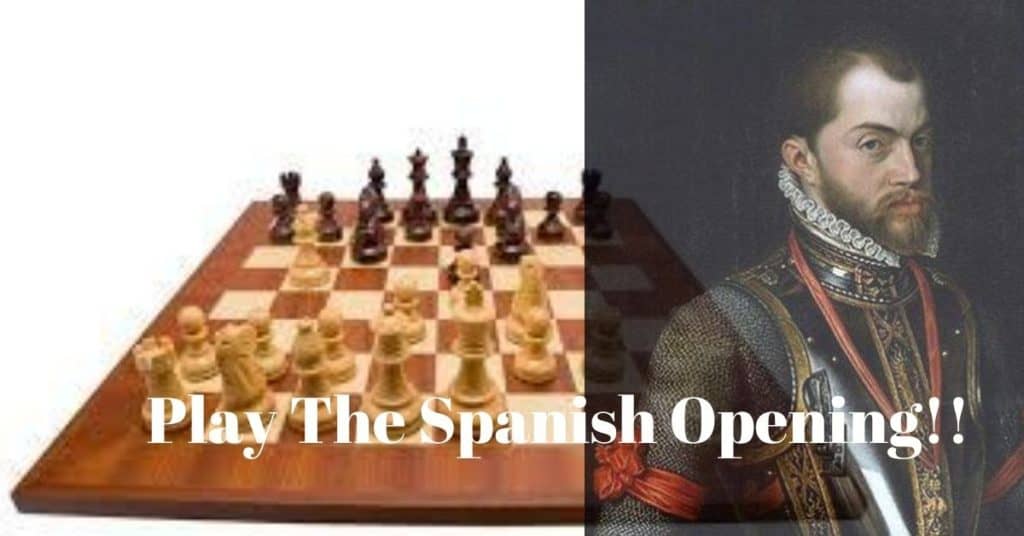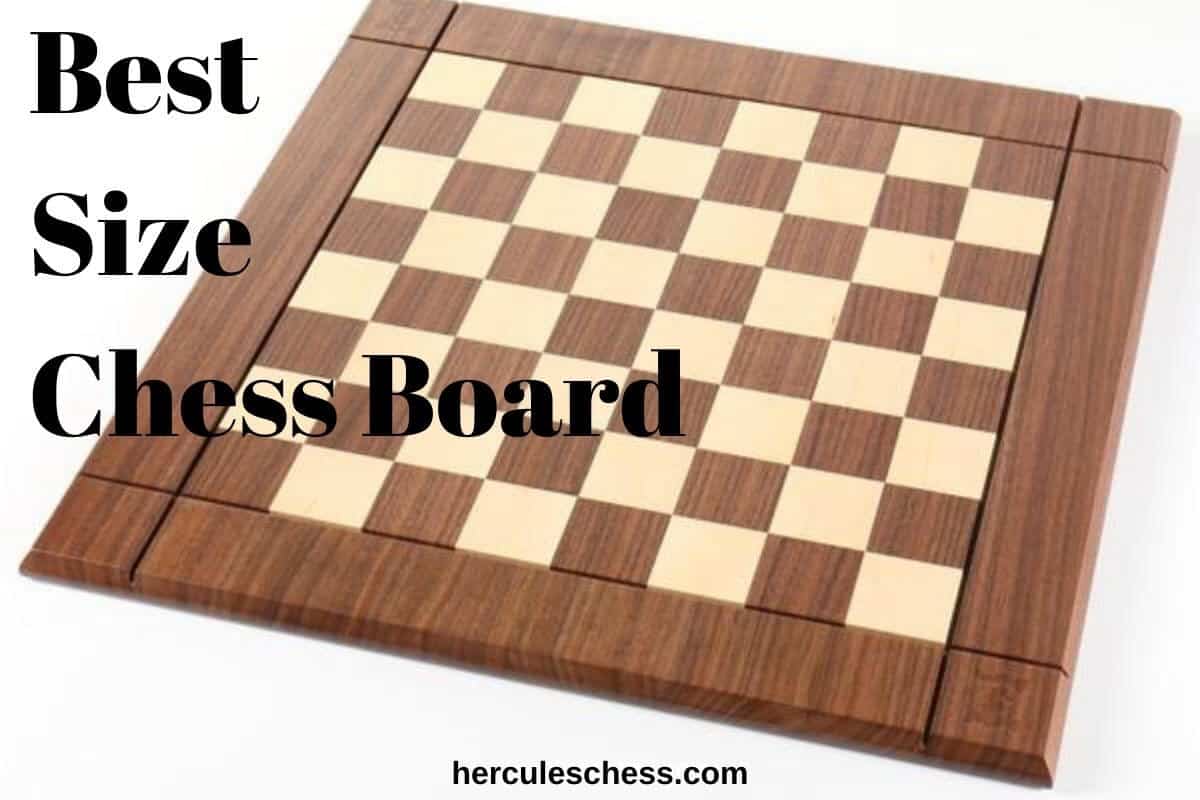The Ruy Lopez is also known as the “Spanish opening in chess.” The Ruy Lopez strategy is quite simple and straightforward. This strategy doesn’t require much brainpower. It is so common that you will see it in friendly games or tournaments. Imagine that you are playing a match against your friend. You play the white pieces, and your opponent takes the black ones.
Basic moves happen, like the white pawn (you) will move to e4 and the black pawn (your opponent) moves to e5. Next, you will move your knight to f3, and the black knight will respond by moving to c6. Further, you, as the white player, will pin down the black knight with your bishop. This move puts the knight in danger of being captured as well as the pawn at e5.
Starting Position of The Ruy Lopez (1.e4 e5 2.Nf3 Nc6 3.Bb4)
The most common response by black is to move their pawn to a6. This move is done to try and divert the bishop from attacking the knight. However, as the white player, you have two options, to either attack the knight, or to retreat.
In case you decide to attack the black knight, the opponent will still capture the bishop with his/her pawn. Another move you can make is to keep the bishop, because we all know it has many distinct capabilities. You could pull the bishop back to c4 or a4.
At this point, it is advised that you should retreat with the bishop to a4 for two reasons:
- It will keep the bishop safe from the black pawn’s attack and
- it pins your bishop to the knight you were initially targeting at the start of the game.
Bishop Retreating to a4
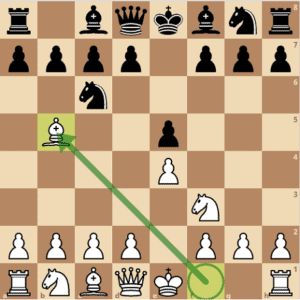
With such a move, the opponent will have to think carefully about other pawns and the knight. Instead, he/she will move his/her pawn to b5. The white player will then move the bishop back to b3. This is also a good position, because it allows the bishop to target opponent’s f7 pawn.
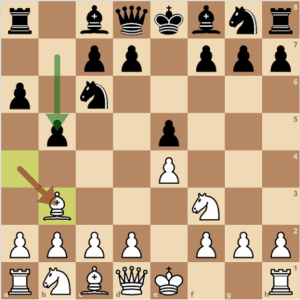
With this move, if the opponent decides to move the pawn from a6 to try and capture the white bishop, the white player can equally capture the black pawn with his/her pawn to a3.
However, the black player will try to move the bishop to f6. After this, the black player will be able to capture the white player’s pawn on e5. In this situation, you should decide to go for kingside castling, because if the knight captures the pawn, then with the castling, your rook and queen can move out to control the center and get ready to attack the opponent.
Once you move the king, you can move your knight and capture the opponent’s pawn on e5. Their king will be in “check.” This is a very good situation for the white player. This is a common way of playing the Ruy Lopez opening.
From this move, the opponent will likely move their bishop to e7, and then castle. You can then continue to attack the black pieces. This tactic at times seems boring, but if you master the moves, then surely you will be able to make better middle game moves. So far, with these moves, you must have noticed that none of your white pieces have been captured.
Origin of The Spanish Game

Despite being one of the most topical openings at the start of the new millennium, the Ruy Lopez is old, dating to the fifteenth century. It gets its name from the Spanish priest Ruy Lopez, who was the first to treat the opening systematically in his Libro del Ajedrez of 1561.
Today, the Ruy lopez is known as the Spanish game in countries such as Europe and South America. The opening is quite sophisticated and embodies all the principles of modern chess. Other openings can be out of date, out of fashion or simply offbeat, but white’s third move 3.Bg5, begins one of the few paths in the openings where both sides seek the ultimately best moves.
This approach can be sometimes impractical, as it requires a player to consider many chess principles and know many long variations, making it easy to make a mistake or blunder. The opening will require more study and effort to learn. As a result, many chess players choose to use an alternate opening such as the Giuoco Piano for their repertoire.
However, the effort to learn the Ruy Lopez can be minimized by choosing one specific variation. The lines without 3…a6 are particularly easy to learn. Meanwhile, learning the more difficult and long variations has the virtue of presenting an opponent with hard problems and the enjoyment of seeing fascinating and cutting edge chess ideas.
Now, the Ruy Lopez may be divided into two systems/variations:
- Variations without 3…a6
- Variations with 3…a6
The variations without …a6 are thought to give Black fewer options than those systems with it, but this is a generality. It is true that these variations are very old defenses to the Ruy Lopez, but they have their points.
These systems are also simpler to learn as black, so the novice is recommended to study one of them before the more involved variations with 3…a6. The variations of the Ruy Lopez without 3…a6 may be divided into 3 systems:
- Berlin Wall
- Schliemann Variation
- Bird Defense
- Fianchetto Defense
- Cozio Defense
- Steinitz Defense
- Classical Variation
1. Berlin Wall
Starting Position of the Berlin Wall (mainline: 1.e4 e5 2.Nf3 Nc6 3.Bb4 Nf6)

The Berlin Wall of the Ruy Lopez has the reputation of being an extremely tough nut to crack. The most solid line for Black is 4.0-0 Nxe4 5.d4 Nd6. It’s quite an underrated variation that has been used by Grandmaster Arthur Bisguier for decades. However, the Berlin defense achieved world wide popularity after being utilized with great success by Vladimir Kramnik in his World Championship victory against Kasparov in 2000. The Berlin defense may not be suited for the attacking player since the queens are usually traded as early as move 8 (4.0-0 Nxe4 5.d4 Nd6 6.Bxc6 dxc6 7.dxe5 Nf5 8.Qxd8+Kxd8).
Berlin Strategy
The game is relatively slow and moves are more strategic and positional. However, there are certain lines where the play can become extremely sharp and tactical, with white hoping to exploit the vulnerable position of Black’s king in the centre. It’s all very fascinating, but whether it represents the ideal choice for the club player is debatable.
2. Schliemann Variation (3…f5)
Starting position of the Schliemann variation
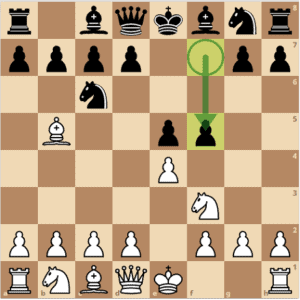
This is the infamous Schliemann variation named after Adolf Schliemann (1817-1872). It is also sometimes known as the Jaenisch Gambit, named after Carl Jaenisch (1813-1872) who was in fact the first one to play it. The move 3…f5 has the ability, like no other variation, to strike terror into the heart of an unsuspecting Ruy Lopez player.
The Schliemann has never been considered a truly respectable option by the world’s top players. It seems to break all the established principles of opening play by weakening the king’s protection and neglecting to develop a piece. Nevertheless, this risky policy has never been completely refuted despite numerous attempts. The variation has stood the test of time and undoubtedly has the right to exist
Strategy
Black plans to open the f-file for the purpose of attack, in the course of which he frequently sacrifices a pawn or two. The opening has a dubious reputation, but keeping control of the game is difficult for White to do against aggressive play. By thrusting the f-pawn into the game on the third move, Black aims to seize the initiative at the earliest opportunity.
3. Bird Defense (3…Nd4)
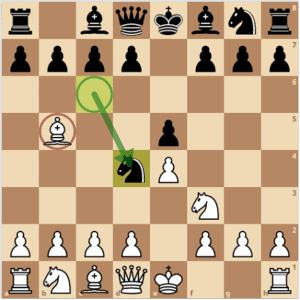
This strange looking defense is named after the English player, Henry Bird, who played it consistently during the second half of the 19th century. Although some strong grandmasters occasionally use it as surprise weapon, the defense has never really become popular.
This is hardly surprising considering that Black violates the established rules of development by moving the same piece twice in the opening, only to see it exchanged, and at the same time compromises his pawn structure.
Naturally the move also has some positive effects. Black immediately relieves any future worries about the exchange Bb5xc6 and, assuming that white exchanges on d4, Black’s d4 pawn will cramp the white position to a certain degree. The Bishop on b5 is also left looking slightly misplaced, although quite often Black will have to take the time to chase it with c7-c6 in order to be able to move his d-pawn and let the queen’s bishop into the game.
All in all, the Bird is an interesting system in which White must demonstrate a good level of understanding and specific knowledge in order to guarantee an advantage.
4.Nxd4 exd4 5.0-0
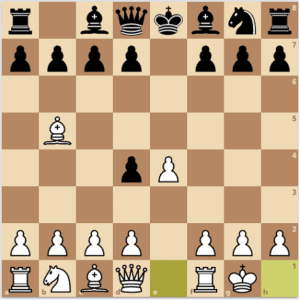
This is universally recognized as the best move. Castling is an essential part of White’s plan, so by playing it immediately he retains the maximum flexibility regarding the rest of his army
Strategy
The most important general idea to understand in this variation is the issue of where to retreat the b5 bishop in the event of Black playing …c6. He could play an immediate 5…c6 or he could postpone it for a move or two. The rule to remember is: In case of an immediate 5…c6, you retreat to c4. In the event of the common 5…Bc5 6.d3 c6 you should go to a4 for reasons that will appear apparent
4. Fianchetto Defense
1.e4 e5 2.Nf3 Nc6 3.Bb4 g6
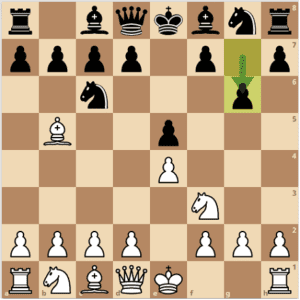
This is the Fianchetto Defense of the Ruy Lopez, sometimes known as the Smyslov variation named after the seventh World Champion, who included it in his repertoire in four different decades. It has never achieved widespread popularity even though it has been a regular choice for a few strong GMs including Malaniuk.
Strategy
Black his hoping that his king’s bishop will be able to exert a strong influence on the game from g7, although as we shall see, White can cut across that idea quite effectively. All in all, the fianchetto defense can be summarized as being solid but slightly passive.
5. Cozio Defense (3…Nge7)

This is known as the Cozio Defense. A chess base search revealed no details or games by the man himself, although lane mentions that Carlo Cozio was a writer and player who lived in the eighteenth century. As for the merits of Black third move, the most obvious benefit is that the knight on e7 reinforces its brother on c6, meaning that Black is unlikely to have to worry about Bxc6 ideas in the near future.
Ironically, the mainline of this variation sees White ruin Black’s queenside structure by making that very exchange! The drawback of Black’s system is that the f8-bishop is blocked in, meaning that its development will cost Black additional time.
Meanwhile, white can castle and cease the centre with c2-c3 and d2-d4. Black can react in a variety of ways, the choice of which will obviously have some bearing on the type of middlegame that will be reached. As far as the opening is concerned, White’s plan for the next few moves will usually involve the creation of a strong pawn centre with c2-c3 and d2-d4 as noted above.
Post you may like: Best chess openings for beginners
6. Old Steinitz Defense (3…d6)
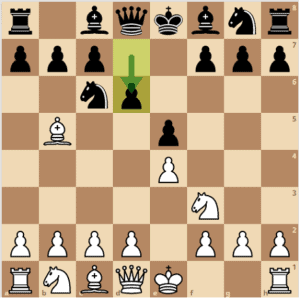
Black defends the centre in the most straightforward manner. This playable but White obtains a freer position without much trouble, so the defense is rarely seen nowadays. This solid method of defense is named after Wilhelm Steinitz, the first official World Chess Champion. Black does not try to do anything spectacular in the early stages, instead settling for simple piece development and a firm defensive position.
Although this is a fundamentally sound approach which can never be refuted, it does not really challenge White in the early stages and the first player has a multitude of ways to achieve a comfortable position. That is why 3…d6 has never achieved any great popularity at either club or master level. At the same time we must recognize that Black is not breaking any traditional rules of opening play. Therefore, any expectations of White to be able to force a substantial opening advantage can be viewed as wholly unrealistic.
White’s most natural reply to 3…d6 is 4.d4

This is by far the most popular move, immediately fighting for the central squares. The pressure on Black’s e5 pawn usually encourages him to cede to centre by consenting to the exchange with …exd4 at some point during the next few moves.
7. Classical Variation (3…Bc5)
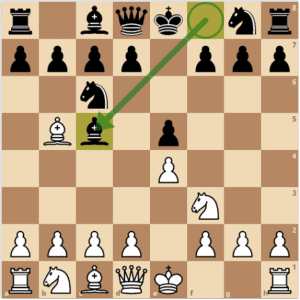
The Classical Variation of the Ruy Lopez is the straight forward developing move 3…Bc5. Though probably one of the oldest defense to the Ruy Lopez, it still sees use today. White sets problem with 4.c3, but Black can often get counterchances as it is difficult for White to keep control. The Classical variation was used by many of the old greats including Paul Morphy, Anderssen and the first world champion, Wilhelm Steinitz.
Black doesn’t try for anything fancy. Just good old fashion piece development. This system has never been truly popular amongst modern-day grandmasters, although quite a few have dabbled with it from time to time.
